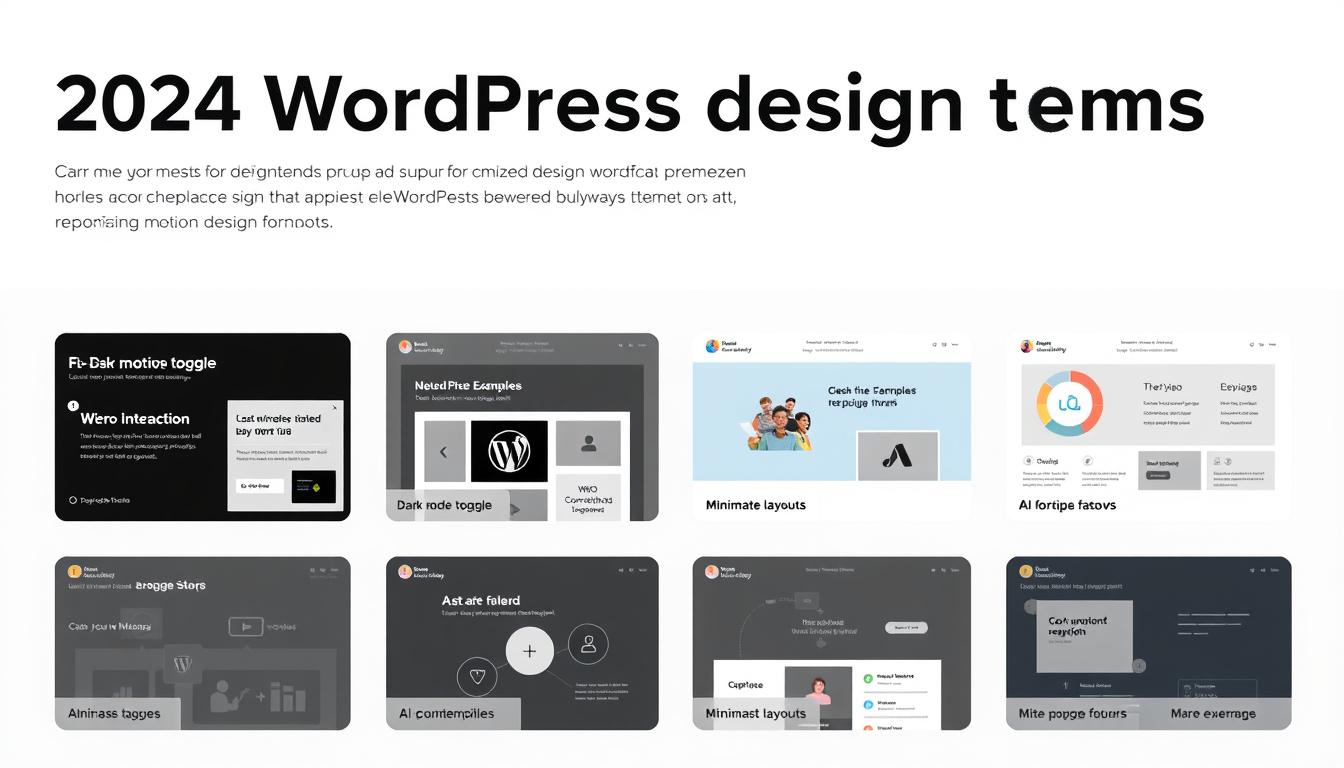In this article, we will explore the significance of HTML semantics and provide you with best practices in web development. HTML semantics refers to the art of using markup to convey meaning and structure to content. By implementing semantic HTML, you can create SEO-friendly markup that not only improves the organization and readability of your web pages but also enhances accessibility and search engine optimization.
Key Takeaways:
- Semantic HTML enables us to utilize specific tags to enhance the organization, SEO, and readability of web pages
- Tags such as
, - Benefits of using HTML semantic markup include improved document structure, enhanced accessibility, better SEO, and improved code readability and collaboration
- Linking pages using HTML elements is an important aspect of semantic markup implementation
- Understanding the structure and anatomy of HTML elements is essential for effective semantic markup implementation
Semantic HTML Elements for Enhanced Organization and SEO
Semantic HTML elements play a crucial role in creating a well-structured and search engine optimized website. By using semantic HTML tags, you can enhance the organization and readability of your web pages, while also improving your website’s SEO performance.
Let’s explore some of the commonly used semantic HTML tags and understand how they contribute to the overall structure and search engine optimization of your website.
Header
The <header> element represents the introductory content or navigation section of a web page. It typically contains logos, headings, and navigation menus. By using the <header> tag appropriately, you can clearly define the header section of your webpage.
Navigation
The <nav> element represents a section of a page that contains navigation links. It assists users in navigating through the website. By utilizing the <nav> tag, you can create a well-structured and easily navigable website.
Article
The <article> element represents a self-contained composition in a document, such as a blog post, news article, or forum post. It enables search engines to understand and index the content more accurately. By using the <article> tag, you can organize your content into meaningful and indexable sections.
Section
The <section> element defines a standalone section of a document. It groups related content together. By utilizing the <section> tag, you can create well-defined sections within your webpage, enhancing its overall structure and organization.
Footer
The <footer> element represents the footer of a document or a section. It commonly includes copyright information, contact details, and links. By using the <footer> tag, you can clearly define the footer section of your webpage, providing important information and improving the overall user experience.
By incorporating these semantic HTML elements into your website, you can enhance the organization of your content, improve accessibility for both humans and search engines, and create a better user experience overall. Remember to use these tags appropriately and ensure they accurately represent the purpose and content of the sections they enclose.
Understanding Semantic HTML Elements for Enhanced Organization and SEO
Let’s take a closer look at some commonly used semantic tags that can significantly enhance the structure of your web documents.
Header:
The
| Example: |
|
|---|
Navigation:
The
| Example: |
|
|---|
Article:
The
| Example: |
|
|---|
Section:
The
| Example: |
|
|---|
Footer:
The
| Example: |
|
|---|
By utilizing these semantic HTML tags appropriately, you can create well-organized, meaningful, and accessible web pages that are optimized for both search engines and human users.
Benefits of Using HTML Semantic Markup
By employing HTML semantic markup, you can unlock a myriad of benefits that will elevate your website’s performance and user experience. HTML semantic markup goes beyond the basic structure of a webpage and focuses on conveying meaning and context to both machines, like search engines, and humans. Let’s explore some of the key advantages of using HTML semantic markup:
| Benefit | Description |
|---|---|
| Improved Document Structure | By using appropriate semantic tags such as <header>, <nav>, <section>, <article>, and <footer>, you can create a well-organized and meaningful structure for your web pages. This enhanced structure not only makes it easier for search engines and assistive technologies to understand and navigate your content, but also improves overall user experience. |
| Enhanced Accessibility | HTML semantic markup plays a crucial role in web accessibility. By using semantic elements like <h1> to <h6> for headings, <p> for paragraphs, <button> for buttons, and <input> for form inputs, you can ensure that your web pages are accessible to individuals with disabilities. Screen readers and other assistive technologies rely on semantic HTML to interpret and present content accurately to users with visual impairments or other disabilities. |
| Search Engine Optimization (SEO) | Proper use of semantic elements in HTML helps search engines understand and index your web content effectively. Semantic tags provide valuable information about the structure, headings, and content hierarchy of your web pages. This allows search engines to determine the relevance and importance of different sections within your content, potentially leading to higher search rankings and improved visibility. |
| Code Readability and Collaboration | HTML semantic markup improves code readability, making it easier for developers to understand and work on a project. When developers adhere to semantic standards, the code becomes more self-explanatory and intuitive. This reduces the learning curve for new team members and facilitates collaboration. Semantic markup also encourages the use of modular and reusable code, promoting efficiency and scalability in web development. |
By leveraging the power of HTML semantic markup, you can enhance your website’s document structure, accessibility, search engine optimization, and code collaboration. This not only improves the overall user experience but also ensures that your website is future-proof and adaptable to emerging technologies. So, embrace the art of HTML semantics and unlock the full potential of your web development projects.
Linking Pages with Semantic HTML Elements
Establishing effective links between pages is essential for seamless navigation and enhanced user experience. With HTML Markup, you can create links that allow users to seamlessly navigate between different pages within a website or even link to external resources. Let’s explore the basics of linking pages using semantic HTML elements and learn how to create links using HTML syntax.
Understanding HTML Links: The Anchor Tag
At the core of linking pages is the anchor tag, <a>. This tag is used to create a hyperlink, allowing users to click on text or images to navigate to another page.
The syntax for creating a basic link is as follows:
<a href="target_page.html">Link Text</a>
In the above code snippet:
- The
hrefattribute specifies the URL or file path of the target page. - Replace
"target_page.html"with the desired destination page’s URL or file path. - The link text, represented by
Link Text, is the clickable text or image that represents the link.
Relative and Absolute Paths
When specifying the URL or file path of the target page, you have two options: relative and absolute paths.
Relative paths are used when linking to pages within the same website or directory structure. They are shorter and do not include the full URL. For example, consider two HTML files in the same directory:
| File | Relative Path |
|---|---|
| index.html | index.html |
| about.html | about.html |
To create a link from index.html to about.html, you can use the following code:
<a href="about.html">About</a>
Absolute paths, on the other hand, are used when linking to pages on external websites or when the target page is located in a different directory. Absolute paths include the full URL or file path. For example, linking to the official website of a company:
<a href="https://www.example.com">Visit Our Website</a>
By understanding the differences between relative and absolute paths, you can create links that effectively navigate users to the desired destination.
Now that you have a basic understanding of how to create links using HTML Markup, you can start implementing effective page navigation within your website. Remember to use semantic HTML elements and follow best practices to enhance the accessibility and usability of your links.
Understanding the Structure and Anatomy of HTML Elements
To fully grasp the power of semantic markup, it’s essential to have a solid understanding of the structure and composition of HTML elements. HTML documents are made up of various tags and attributes that define the structure and format of web content. Understanding the role of these elements is crucial in creating well-organized and accessible web pages.
Anatomy of an HTML Element
HTML elements consist of an opening tag, content, and a closing tag. The opening tag, enclosed in angle brackets (), indicates the beginning of an element, while the closing tag, also enclosed in angle brackets but with a forward slash (/) before the tag name, marks the end of an element.
Let’s take a closer look at the anatomy of an HTML element:
| Tag | Description |
|---|---|
| <tag> | The opening tag of an element |
| Content | The content within the opening and closing tags |
| </tag> | The closing tag of an element |
The combination of the opening and closing tags, along with the content, forms a complete HTML element. Here’s an example of a paragraph element:
<p>This is a paragraph.</p>
HTML Tags and Attributes
HTML tags define the type and purpose of an element, while attributes provide additional information about the element. Tags and attributes work together to structure and format web content.
Here are some commonly used HTML tags:
- <h1> to <h6>: Headings and subheadings
- <p>: Paragraphs
- <ul> and <ol>: Unordered and ordered lists
- <li>: List items
- <table>, <tr>, <th>, <td>: Tables to create structured data
Attributes provide additional information about elements. They are included within the opening tag and follow the tag name.
For example, the <a> tag is used to create links, and the href attribute specifies the URL or file path of the target page:
<a href=”target_page.html”>Link Text</a>
Document Structure
HTML documents follow a hierarchical structure, with the element acting as the root element. All other elements are nested within the element.
The basic structure of an HTML document includes the
and elements. The element contains metadata, such as the page title and links to external resources. The element houses the visible content of the webpage.
Tables for Structured Data
Tables can be used to create structured data, presenting information in a clear and organized manner. HTML provides tags specifically designed for table creation, including the
| , and | tags.
The
Best Practices for Using HTML MarkupTo make the most out of HTML markup, it's essential to follow best practices and optimize your code for usability and performance. Here are some tips to consider:
By following these best practices, you can create clean and efficient HTML markup that enhances the usability, accessibility, and overall performance of your website. Streamlining Procurement with HTML MarkupHTML Markup can greatly streamline and automate procurement processes by creating tailored templates and forms that enable easy data input and retrieval. Here are some ways HTML Markup can enhance your procurement operations:
By utilizing HTML Markup in procurement, you can streamline operations, improve accuracy, and enhance overall efficiency in your organization's procurement processes. Tips for Effective HTML Markup ImplementationTo ensure the success of your HTML markup implementation, it's important to follow best practices and leverage strategies that optimize your website's performance. By incorporating the following tips, you can create clean and efficient HTML code that enhances user experience, improves search engine visibility, and fosters collaboration in web development. 1. Follow HTML Best PracticesAdhering to HTML best practices helps maintain consistency, readability, and compatibility across different browsers and devices. Some key best practices include:
2. Optimize for Mobile DevicesWith the increasing use of smartphones and tablets, it's crucial to ensure your HTML markup is responsive and adaptable to different screen sizes. Consider the following mobile optimization techniques:
3. Utilize CSS FrameworksCSS frameworks, such as Bootstrap and Foundation, provide pre-designed components, stylesheets, and JavaScript plugins that can streamline your HTML markup development. Benefits of using CSS frameworks include:
4. Regularly Validate Your HTML CodeValidating your HTML code ensures it adheres to the official standards set by the World Wide Web Consortium (W3C). By using tools like the W3C Markup Validation Service, you can identify and fix any errors or inconsistencies in your code. Benefits of regular HTML code validation include:
5. Embrace Collaboration and Code ReviewCollaboration plays a vital role in successful web development projects. By implementing the following strategies, you can foster effective collaboration and improve code quality:
By following these tips and best practices, you can ensure that your HTML markup implementation is efficient, maintainable, and optimized for optimal user experience, search engine visibility, and collaboration in web development. In addition to its impact on web development, HTML markup can also prove valuable in streamlining procurement processes through the creation of customized templates and forms.HTML Markup provides a powerful tool for designing tailored templates and forms that can streamline procurement operations. By utilizing HTML tags and attributes, developers can create interactive and user-friendly forms that optimize data input and retrieval. When creating procurement templates, developers can leverage HTML form elements such as , , and HTML forms also support various input types, including text, number, date, and file uploads, enabling procurement teams to gather accurate and relevant data from users. By specifying the appropriate input types, developers can enforce data validation and ensure the quality and consistency of the information collected. Furthermore, HTML Markup allows for the customization of form layouts and styles through the use of CSS. By leveraging CSS frameworks such as Bootstrap, developers can apply pre-designed styles and responsive layouts to their procurement forms, ensuring a consistent and visually appealing user experience across different devices. Once the procurement forms are created, HTML Markup enables seamless data retrieval. By utilizing server-side scripting languages like PHP, developers can process the form submissions and store the data in databases or generate reports for further analysis. With the power of HTML Markup, procurement teams can automate their processes and minimize manual data entry errors. By creating tailored templates and forms, organizations can standardize procurement procedures and capture accurate data, streamlining the overall procurement workflow. In conclusion, HTML Markup plays a crucial role in streamlining procurement processes through the creation of customized templates and forms. By utilizing HTML tags, attributes, and CSS frameworks, developers can design user-friendly interfaces that optimize data input and retrieval, resulting in more efficient and accurate procurement operations. FAQQ: What is HTML semantics?A: HTML semantics refers to the practice of using HTML markup to convey meaning and structure to content. By utilizing specific semantic tags, developers can enhance the organization, SEO, and readability of web pages. Q: What are some common semantic HTML tags?A: Some common semantic HTML tags include " Q: How does semantic HTML improve accessibility and SEO?A: Semantic HTML allows developers to choose tags that accurately describe the content they enclose. This improves accessibility for screen readers and other assistive technologies, while also helping search engines understand and index the content more effectively. Q: How can semantic HTML benefit code readability and collaboration?A: Semantic HTML improves code readability by making it more self-explanatory. It also encourages the use of modular and reusable code, promoting a more efficient and scalable development process. This facilitates collaboration among team members. Q: How do you create links between different pages using HTML?A: Links are created using the anchor tag . You need to specify the URL or file path of the target page in the href attribute and the text or image that represents the link between the opening and closing tags. Relative and absolute paths can be used depending on the location of the target page. Q: What are the essential components of an HTML document?A: An HTML document comprises the declaration, the tag as the root element, the section for metadata and external resources, and the section for visible content. These components work together to define the structure and presentation of the document. Q: What are the different types of HTML markup?A: There are three main types of HTML markup: structural markup, semantic markup, and presentational markup. Structural markup defines the overall structure of a webpage, semantic markup adds meaning to the content, and presentational markup is used for visual formatting. Q: What are some best practices for effective HTML markup implementation?A: Some best practices include proper indentation and code formatting, using semantic elements, optimizing for mobile devices, utilizing CSS frameworks, and regularly validating code for errors and inconsistencies. Q: How can HTML markup streamline procurement processes?A: HTML markup can streamline procurement processes by creating tailored templates and forms for easy data input and retrieval. This saves time and ensures accuracy in capturing essential procurement information. |
|---|
Source Links
- https://oboloo.com/blog/demystifying-html-markup-a-beginners-guide-to-streamlining-procurementtag-indicates-a-main-heading-while-thetag-represents-a-paragraph-by-using-various-tags-in-combination-with-text-or-media-conte/
- https://teqbaddie.hashnode.dev/an-in-depth-guide-to-html-the-art-of-semantic-markup-page-linking-and-best-practices
- https://brightchamps.com/blog/html-basics/






